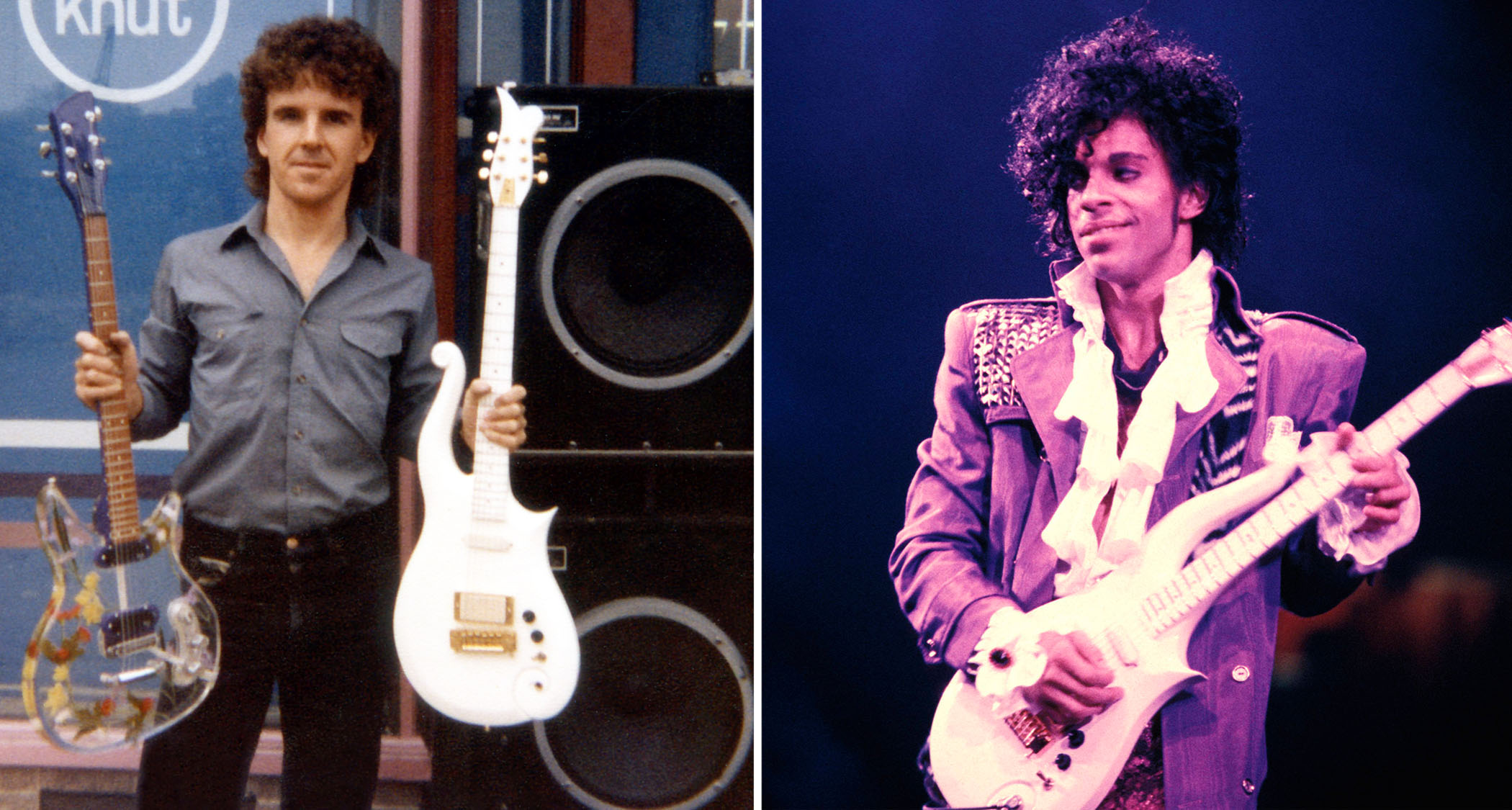
Dave Rusan had never actually built a guitar before when he found out he’d be making one for a local legend who went by the name of Prince.
The year was 1983 and the funk/soul icon was already well-known to the staff of Knut Koupeé Music in Uptown, Minneapolis – on one occasion speaking with the owner about a custom order for his upcoming Purple Rain movie.
The request was passed down to shop tech and repairman Rusan who, despite the mammoth task ahead of him, took on the project and would soon end up crafting several of the major label superstar’s most recognizable and storied six-strings.
One of them, Cloud 3 – finished in a lemony yellow, fitted with active EMG pickups and Love Symbol position markers – made headlines this summer after parting hands at auction for $910,000.
The guitar had been used extensively over the mid-’80s and early ’90s, most notably on the Purple Rain, Parade, Sign O’ the Times, Lovesexy and Diamonds & Pearls tours, and long-cemented its place in mainstream popular culture.
Here’s a closer look at the iconic Cloud line, from the influences behind those dramatic curves and the double-ended brightness of the right tonewoods with the right pickups to the mission statement behind Rusan’s meticulous modern replicas.
From what you’ve said in the past, Prince liked the horn and swirl on his bassist’s Sardonyx four-string, adopted from Gibson F-style mandolins. How much other input was there on the design of the original?
“The movie [1984’s Purple Rain] had already started and Prince was busy, so I didn’t have much direct contact with him during that process. Which is weird, because when you make a custom guitar, you want to talk about the fret size, neck, weight, all that stuff.
“The owner told me to use the Sardonyx as a starting point and redesign it in white with gold parts. Prince wanted spades on the fingerboard and EMG pickups, which were still quite new. I remember asking if I could talk to him, but nobody would get back to me. I just had to make a guitar I liked and hope for the best. Turns out me and Prince had the same taste.”
Were you surprised by the results?
“We had the tools you’d expect to find at someone’s house. There were a few belt sanders and a Dremel. I spent 10 hours a day for about a month making that guitar, but with tremendous enthusiasm. When you’re put to the test, you might learn you can do more than you thought. I couldn’t have said no. If it didn’t work out, the worst-case scenario would have been a white Strat in the film.”
When I tried out for his band, he didn’t really talk that much. He was mysterious and enigmatic; that’s what made him so intriguing and usual
You had even tried joining his band by this point.
“He’d been coming in for years, since high school, and had a few albums out. Minnesota is cold in the winter; Prince would say that’s why the bands were so good – everybody would be at home working on music. One time he came in and put on a guitar while sitting at a keyboard. He was hammering a melody on the guitar and played the harmony in thirds on the keyboard at the same time.
“We all knew he was going somewhere. He had so much determination. Put that next to the talent, and you had this tremendous thing. Early on, he was so shy. When I tried out for his band, he didn’t really talk that much. He was mysterious and enigmatic; that’s what made him so intriguing and usual. Prince was complicated and contradictory, but always brilliant.”
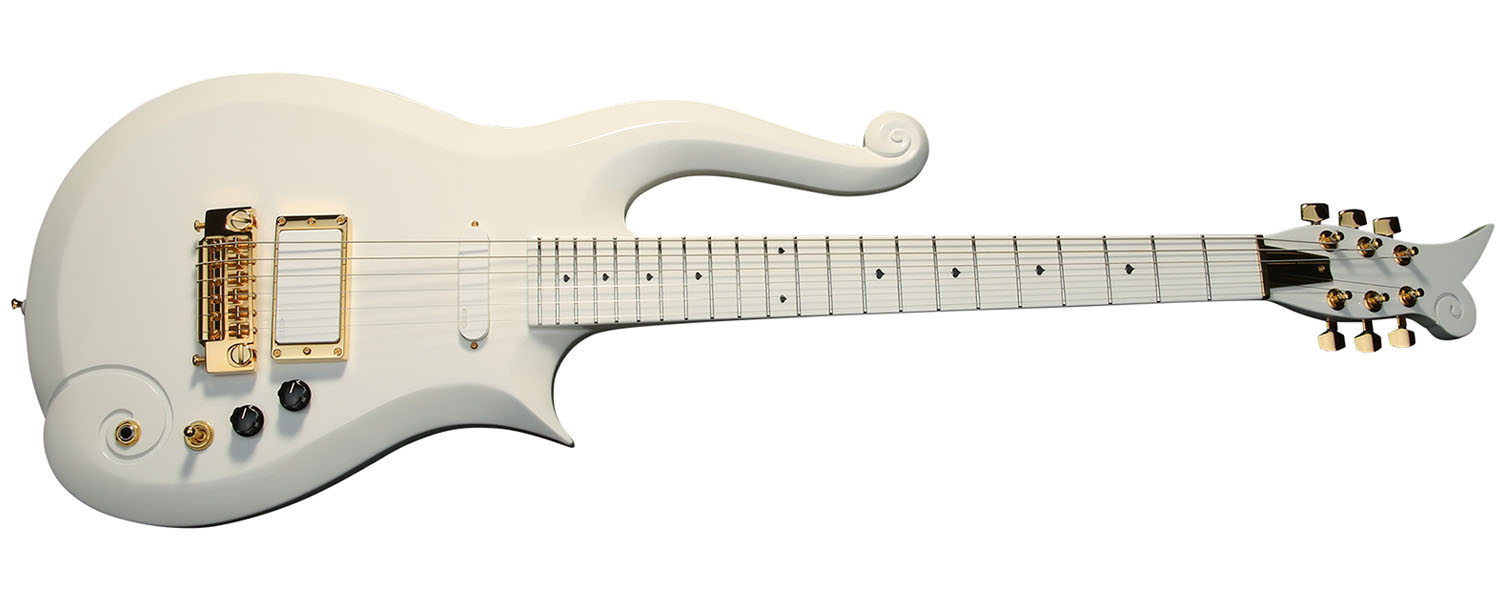
He then requested two more guitars for the stage.
“That made me think, ‘Well, jeez, I guess he liked it!’ The original was playable, but was thought of more like a movie prop. It was like a co-star, a part of the plot. I almost felt like after the movie he would never touch it again. Knowing he enjoyed the guitar was nice. Thankfully, I had my blueprints [and had] it all broken down into steps to make it less overwhelming.”
What drew you to hard rock maple for the body?
“I made everything but the neck, which were neck-through sections of hard rock maple. It’s actually the same maple the syrup comes from. I was thinking of trying something else like alder, but I realized this guitar would be getting some hard use. It’s not a big guitar, weighing about 8 lbs., less than most Les Pauls.
“It was important that it was rugged. Prince would throw guitars on stage – and his tech might not always catch them. Luckily these were sturdy, though that made them harder to carve. Schaller was top dog at the time, so I used things like the 457 bridge and mini tuners.”
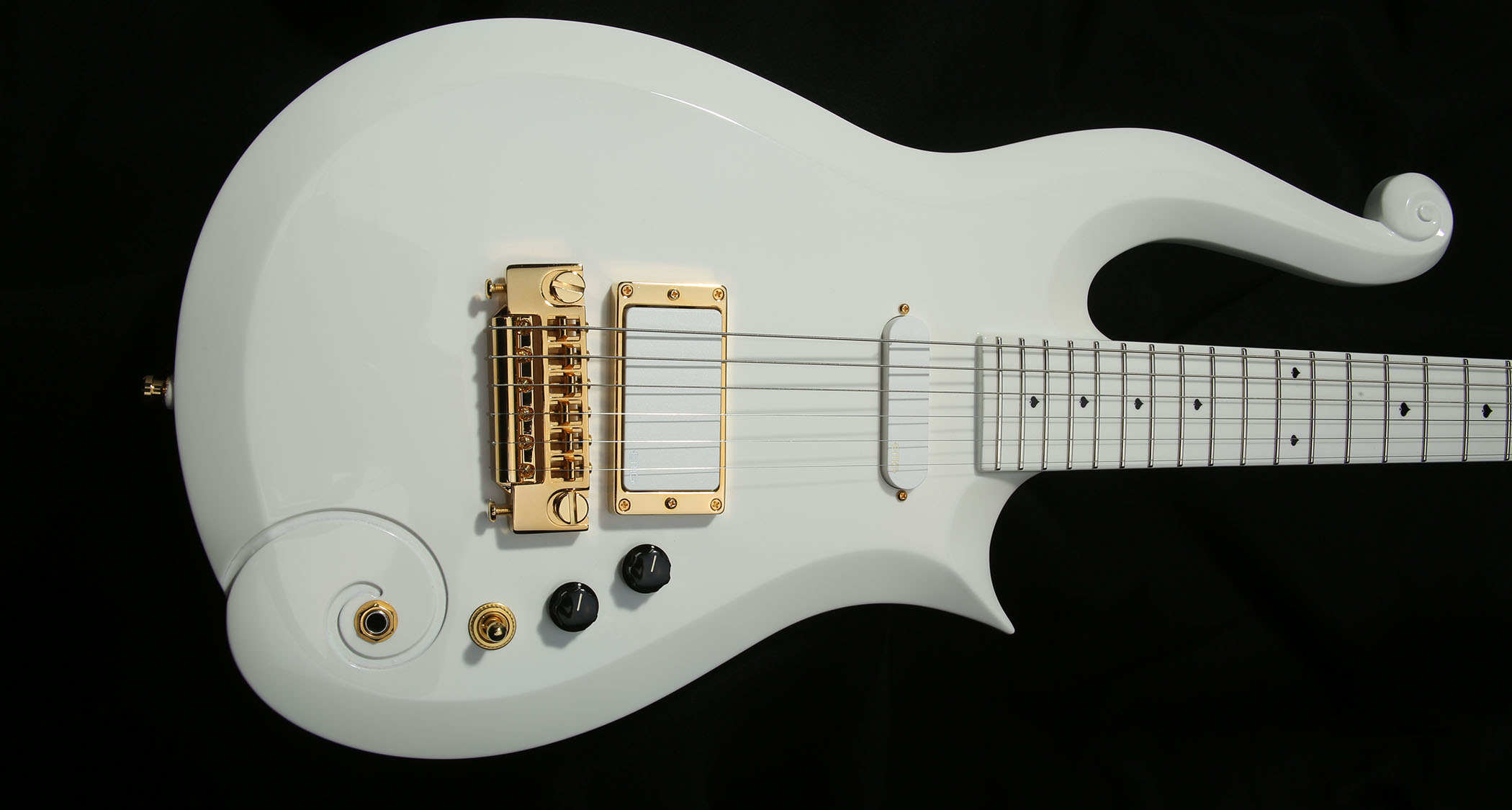
How would you describe the sound and feel of a typical Cloud guitar?
“Two-piece hard rock maple should sound bright. The EMGs add to that in a way that’s clear and detailed rather than tinny. It’s the opposite of Les Pauls, which sound more warm and fuzzy, where the notes blend together.
“My guitars are very revealing with a funky and percussive sound for rhythms. The humbucker has enough sustain and midrange meat for a good lead tone. Maybe the closest thing would be a neck-through Jackson, but everyone seems to agree that the Cloud is iconic in a way that’s totally unique.”
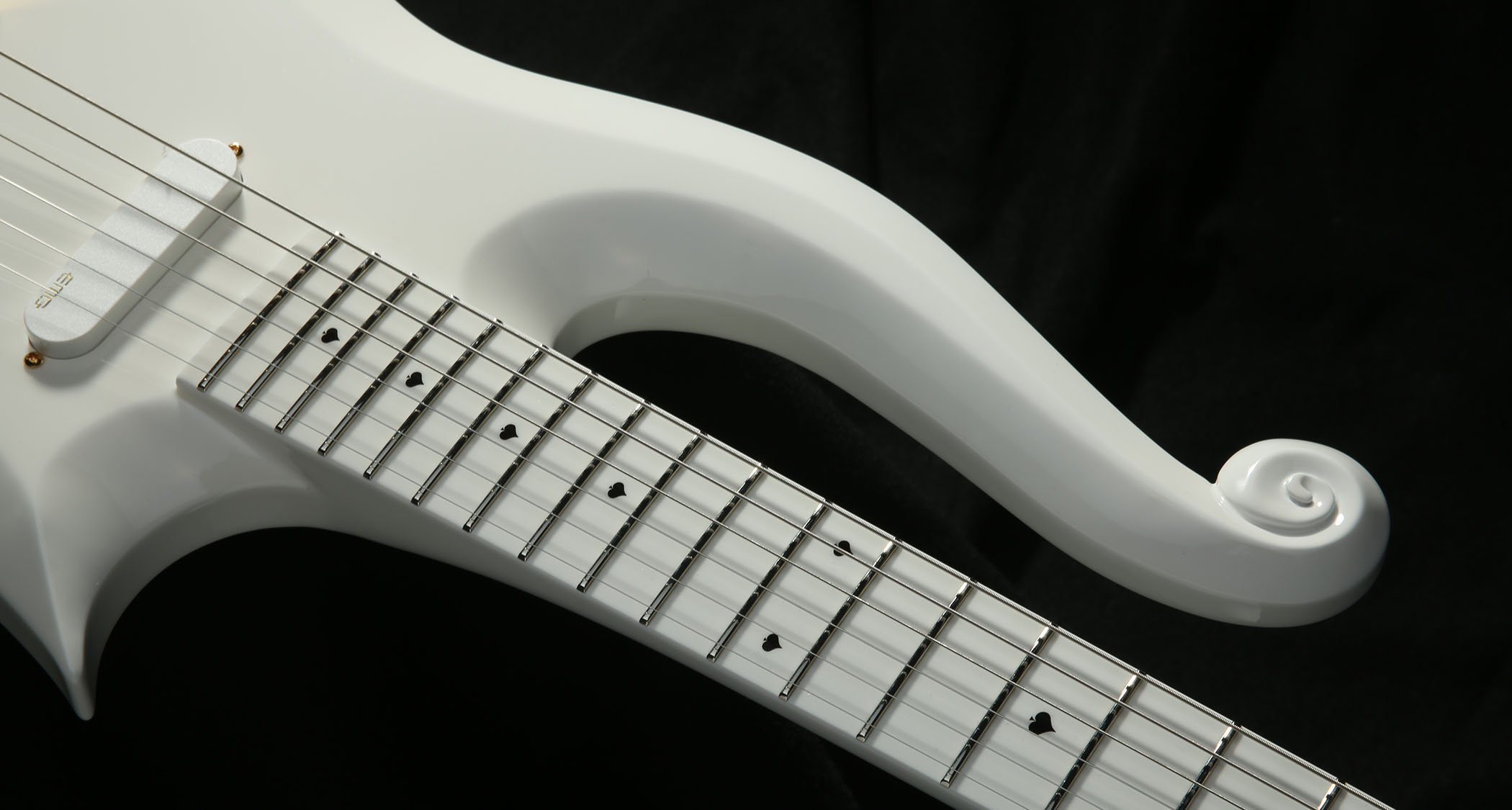
After passing various checks and a CT scan, the third Cloud guitar just sold for close to a million dollars.
“They said it could go up to that. I’d been working with their expert to authenticate it, spending hours in meetings and sharing photos. It needed a look because it had been painted over and over, but most of the time it hadn’t been stripped because they needed everything done quickly.
“Prince was always in a hurry. He’d have ideas [would] and want to move on. The people who worked for him were under pressure because he demanded their best. It was his vision. Maybe he could have been a little more polite at times, but anyone else would have done the same. He was nurturing and warm – but also abrupt and not so warm.”
I’ve been lucky, finding myself in the right place at the right time over and over. But I had a long legal dispute with Paisley Park
Is there a mission statement for Rusan Guitarworks?
“I have three goals. The first is to make my reproductions as accurate as possible, which isn’t easy after 40 years. I had EMG do a special run with the old logo. Schaller changed the M6 tuners, so I ended up finding 50 sets in a box that had been sitting around for over 20 years.
“They haven’t made the bridges in eight years. I have people in foreign countries going into stores looking for them. The second goal is to make these guitars play well. And finally it’s the detail you expect from companies like PRS. Even with a magnifying glass, you won’t find imperfections.”
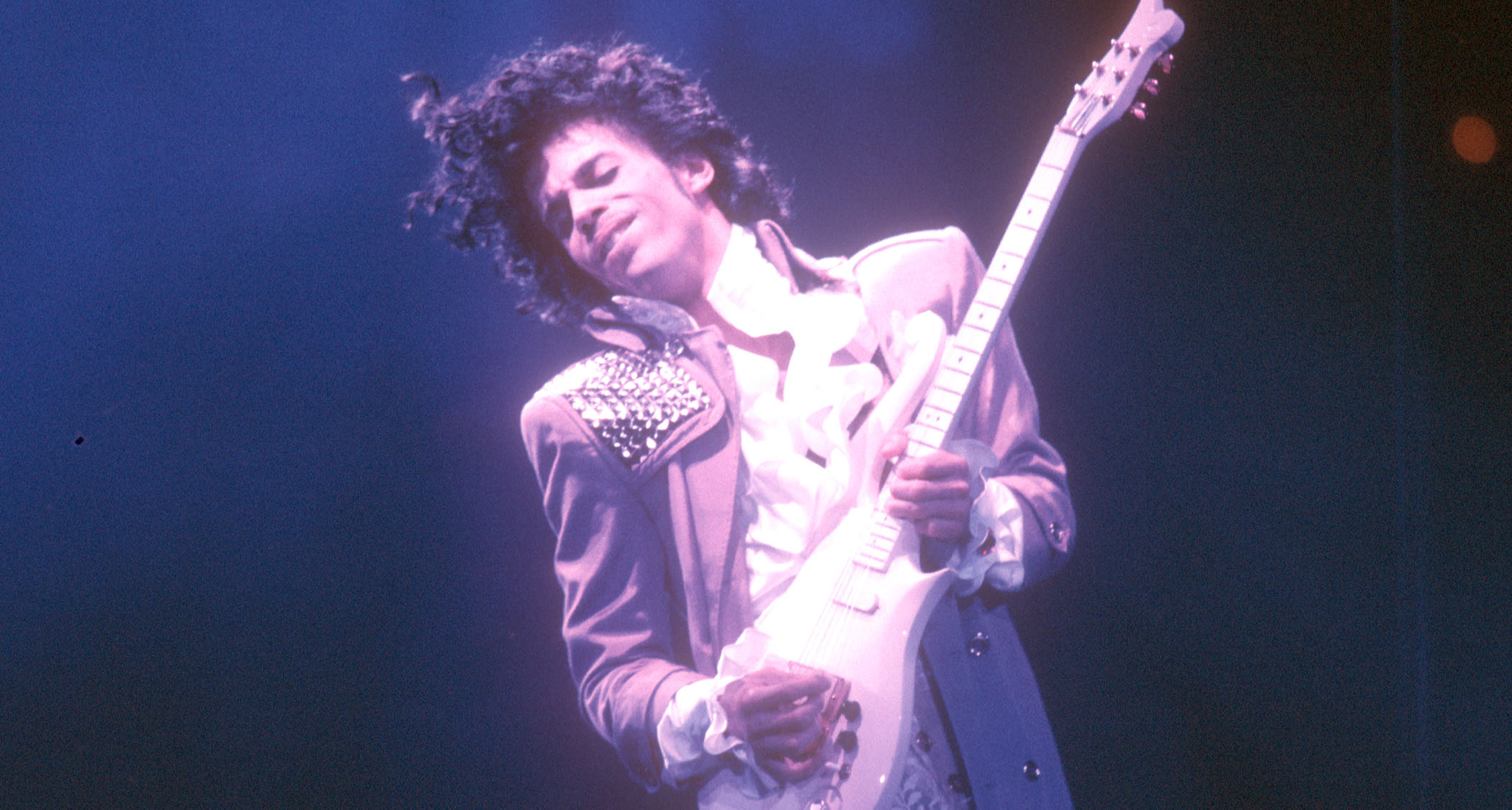
A few years ago there were some disputes about the ownership of the design.
“I’ve been lucky, finding myself in the right place at the right time over and over. But I had a long legal dispute with Paisley Park. Schecter was making the guitars, but my argument wasn’t with them. Nobody had the trademark, not even the guy [Jeff Levin] who made the Sardonyx.
“In 2018 a customer told me to get it to protect myself. I went ahead and placed it in a gold frame, thinking, ‘Boy, I’m safe now!’ Then the estate said, ‘Give us the trademark and stop making the guitars,’ so I had over three years of legal stuff with six different lawyers. In the end we came to an agreement where I could carry on making people happy and honoring Prince’s legacy.”
- Find out more at Rusan Original.







